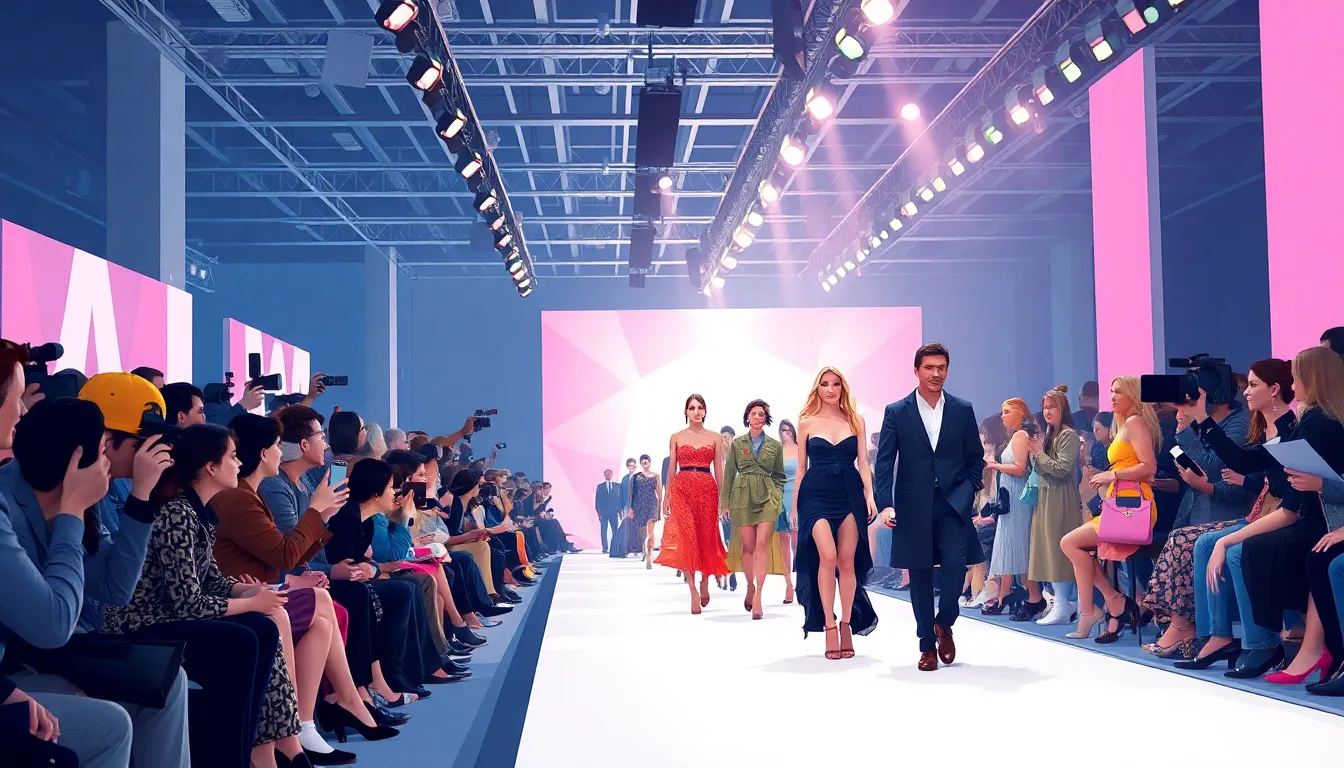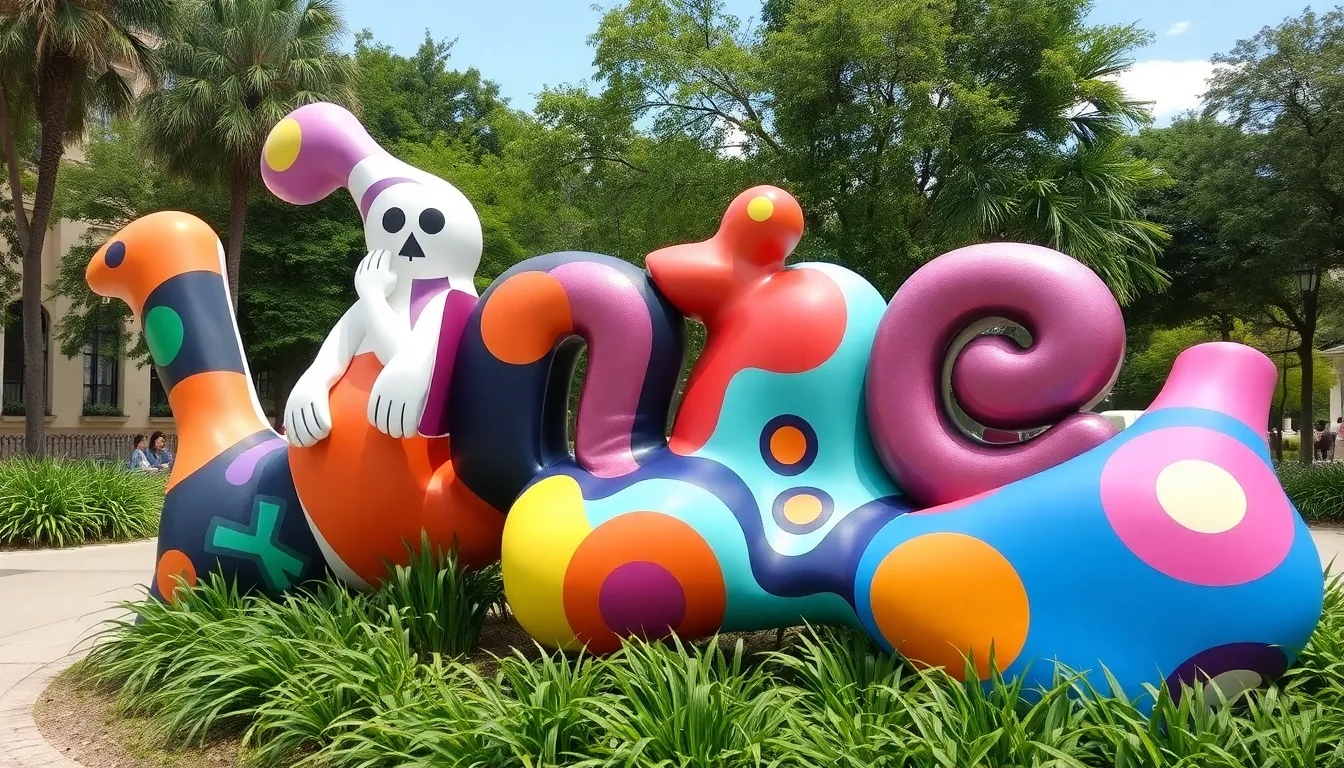Table of Contents
ToggleFashion Week isn’t just a parade of fabulous outfits; it’s a high-stakes game where creativity meets couture. Designers from around the globe gather to showcase their latest masterpieces, turning runways into stages for art, drama, and just a sprinkle of chaos. Picture this: models strutting their stuff while the audience gasps, claps, or occasionally wonders if that outfit is actually wearable. Spoiler alert: it usually isn’t!
But it’s not just about the clothes. Fashion Week is a cultural phenomenon, a trendsetting machine that influences everything from street style to your local mall’s inventory. It’s where the bold and the bizarre collide, and where fashionistas make or break their reputations. So grab your front-row seat and prepare for a whirlwind of style, innovation, and a dash of hilarity—because in the world of Fashion Week, anything can happen.
Overview of Fashion Week
Fashion Week represents an influential global event where designers unveil their latest collections. These presentations occur in major cities such as New York, Paris, Milan, and London, each showcasing unique styles and trends. Models strut down runways in garments that often push creative boundaries and challenge conventional fashion norms.
The showcases cover various styles, including haute couture, ready-to-wear, and streetwear. Attendees typically consist of industry professionals, celebrities, and fashion enthusiasts, all eager to catch a glimpse of the upcoming trends. Each season, Fashion Week generates significant media attention, with millions of viewers tuning in to watch live streams or read about the latest runway highlights.
Fashion Week serves as a breeding ground for innovative ideas and creative expression. Designers leverage this platform to not only present clothes but also to convey messages and narratives through their work. The drama and artistry create an unforgettable experience that resonates in the fashion world long after the shows conclude.
Significantly, Fashion Week affects trends across the entire fashion industry. What emerges on the runways often trickles down to retail stores and consumer wardrobes. Cultural elements intertwine with fashion during this event, further enhancing its importance in shaping societal perceptions of style.
Attention to detail defines the event, with elaborate set designs and orchestrated performances adding to the spectacle. The unpredictability of Fashion Week—unexpected collaborations, surprise appearances, and last-minute changes—fuels excitement and captures global attention. This combination of art, culture, and commerce elevates the event beyond mere fashion displays, making it a hallmark of creativity every season.
Major Fashion Weeks Around the World

Fashion Weeks span several major cities, each showcasing unique styles and influences that define global trends.
New York Fashion Week
New York Fashion Week occurs twice a year, featuring both established designers and emerging talents. Scheduling typically takes place in February and September, with presentations held in iconic locations across the city. Designers often present a blend of high fashion and contemporary aesthetics. Industry professionals, celebrities, and influencers gather to witness the latest collections, generating substantial media coverage. The event serves as a launchpad for many new brands, establishing New York as a leader in the global fashion landscape.
Paris Fashion Week
Paris Fashion Week stands as a pinnacle of haute couture and luxury fashion. The event takes place in late February and early March, then again in September and October. Renowned houses like Chanel, Dior, and Louis Vuitton unveil their collections, attracting worldwide attention. Each show features elaborate sets and theatrical presentations that enrich the viewer’s experience. Paris emphasizes craftsmanship and artistic vision within the design process, making it pivotal in setting trends that ripple across the fashion industry.
Milan Fashion Week
Milan Fashion Week is known for its bold and innovative approach to fashion design. Typically held in February and September, the event showcases both luxury brands and avant-garde designers. Presentations often merge traditional craftsmanship with modern aesthetics. Spectacular runway shows reflect Italy’s rich fashion heritage while pushing creative boundaries. Attendees include fashion editors, buyers, and celebrities, all keen to spot emerging trends and styles that emerge from this influential city.
London Fashion Week
London Fashion Week highlights a diverse range of aesthetics and cultural influences. Scheduled in February and September, the event promotes both established and emerging talents. Innovative British designers frequently challenge norms, showcasing unique designs that redefine contemporary fashion. The events take place in dynamic venues, further enhancing the creative atmosphere. London’s commitment to inclusivity features a range of designers from various backgrounds and styles, making it a vibrant part of the global fashion calendar.
Trends and Highlights from Recent Fashion Weeks
Fashion Weeks continue to showcase innovations that shape the clothing landscape. Emerging designers consistently push boundaries, introducing fresh perspectives and new aesthetics.
Emerging Designers
Emerging designers capture attention during Fashion Week with their unique visions. Many of these creators come from diverse backgrounds, enriching the fashion narrative. Showcasing at New York and London Fashion Weeks, they create buzz with bold colors and unconventional silhouettes. New talents utilize sustainable materials, reflecting the industry’s shift towards eco-friendliness. Remarkably, collections often blend streetwear with high fashion, appealing to a younger audience. Designers like Tia Adeola and Priya Ahluwalia stand out for their engaging storytelling through fashion. These newcomers energize the runway, infusing each collection with originality.
Key Themes and Styles
Key themes and styles define the latest Fashion Week collections, reflecting societal shifts. Minimalism reemerges, emphasizing clean lines and practicality. Contrastingly, maximalism takes center stage with vibrant prints and lavish details. Many designers prioritize inclusion, showcasing diverse body types and celebrating cultural heritage. The color palette incorporates earthy tones and bold contrasts, creating visual impact. Materials vary from luxurious silks to durable denim, showcasing flexibility across seasons. The fusion of vintage elements with modern aesthetics illustrates a cycle of influence. Each presentation invites audiences to engage with the evolving fashion narrative, setting the tone for upcoming seasons.
The Impact of Fashion Week on the Industry
Fashion Week plays a crucial role in shaping the fashion industry. This high-profile event directly influences retail strategies and market trends each season.
Influence on Retail
Retailers closely monitor collections presented during Fashion Week. They analyze trends that emerge on the runway to inform product offerings. Collections often dictate consumer preferences, leading to rapid adaptations in inventory. Fast fashion brands especially capitalize on these trends to deliver similar styles quickly. Buyers attend shows to secure pieces that resonate with current consumer demands. The launch of new products aligns with Fashion Week, ensuring that styles captivate audiences when they hit stores. Overall, the event impacts sales and brand positioning within the competitive landscape.
Social Media and Fashion Week
Social media amplifies the reach of Fashion Week significantly. Platforms like Instagram and TikTok enable instant sharing of runway looks to millions. Influencers and celebrities contribute to the excitement, offering behind-the-scenes glimpses and styling tips. Hashtags associated with Fashion Week trend globally, connecting viewers with the latest trends. Brands engage with their audiences directly through live streams and interactive content, enhancing visibility. Fashion Week thus transcends traditional media, offering real-time connection between designers and consumers. Engagement metrics from social media reflect growing demand for immediate fashion access, reshaping industry dynamics.
Fashion Week remains a captivating spectacle that transcends mere clothing. It’s a powerful platform where creativity and culture collide, influencing not only the fashion industry but also societal trends. The energy of the runway and the bold visions of designers continue to inspire and challenge conventions.
As the world watches, Fashion Week shapes the future of style, pushing boundaries and inviting new perspectives. The event’s dynamic nature ensures that it will always be a focal point for innovation and artistic expression. The excitement generated during these weeks lingers, influencing fashion enthusiasts and consumers alike long after the final curtain falls.




